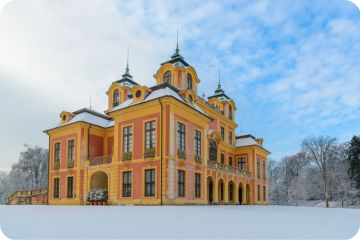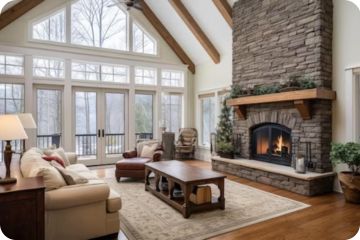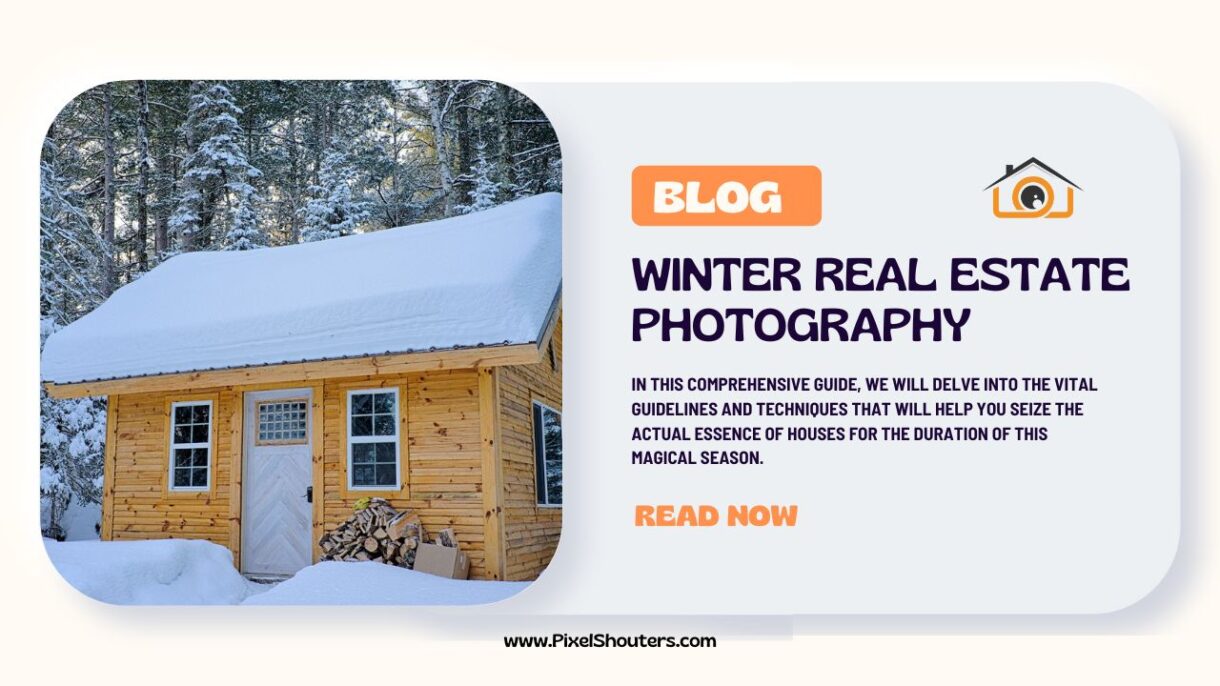Winter Real Estate Photography: Tips and Techniques for Capturing Cozy Homes
real estate photography for the duration of the winter season gives a unique possibility to showcase homes in a very extraordinary mild. With landscapes draped in glistening snow and interiors radiating warmth and comfort, winter can remodel even the maximum normal homes into enthralling retreats. However, it is essential to understand that winter real estate photography offers its very own set of demanding situations and possibilities. In this comprehensive guide, we will delve into the vital guidelines and techniques that will help you seize the actual essence of houses for the duration of this magical season.
Winter Real Estate Photography
1. Preparing Your Equipment for Winter
Before embarking in your winter real estate photography journey, it is vital to ensure that your photography gadget is winter-geared up. The cold climate may have a large impact to your gear, probably affecting the exceptional of your shots. Here’s a checklist to make sure your equipment is in top situation:
- Battery Life Management: The bloodless can drain camera batteries quicker than ordinary. Make sure to hold spare batteries and save them in a warm place, together with an internal pocket of your jacket.
- Lens Care: Clean your digital camera lenses thoroughly and test for any condensation or fogging, which can be commonplace while transitioning between temperature extremes.
- Sturdy Tripods: Choose a sturdy and strong tripod to avoid any wobbling, specifically on icy surfaces.
Beyond equipment guidance, you will also need to adjust your digicam settings to house the unique lighting situations of winter.

Camera Settings for Winter Photography:
- Exposure Compensation: Consider slightly overexposing your shots to compensate for the brightness of snow, ensuring that the snow seems as pristine white rather than grey.
- White Balance: Set your digital camera’s white balance to “daylight hours” to preserve the herbal shades of the iciness landscape.
2. Embracing Natural Light
One of the most captivating aspects of winter real estate photography is the quality of natural light. The soft, diffused light of winter can impart a unique charm to your photographs. To make the most of this natural gift, follow these tips:
- South-Facing Windows: If possible, schedule your photoshoots during times when the property’s south-facing windows receive the most sunlight. This will infuse your interior shots with a warm and inviting ambiance.
- Reflectors and Diffusers: Experiment with reflectors to bounce natural light into rooms, reducing harsh shadows. Diffusers can be used to soften and scatter direct sunlight, creating a more flattering illumination.
- Golden Hour Photography: The “Golden hour” refers to the period just before sunset when the sun is low on the horizon, casting a warm and golden glow. Shooting during this time can add a touch of magic to your winter property photos, both indoors and outdoors.
3. Managing Snow and Weather Conditions
While snow can undoubtedly enhance the visual appeal of real estate photography during winter, it also presents a set of challenges that photographers must overcome. Here’s how to effectively manage snow and other weather conditions:
- Exterior Shots: When capturing exterior shots, ensure that walkways, driveways, and paths leading to the property are clear of snow and ice. This not only enhances the property’s accessibility but also creates a welcoming first impression.
- Overcast Days: Winter often brings overcast skies, which can result in flat and uninteresting lighting. To combat this, consider using exposure bracketing and HDR (High Dynamic Range) techniques to capture a wider range of details in your shots, from shadows to highlights.
- Protecting Your Gear: Cold and moisture can be harsh on your camera equipment. Invest in rain covers and protective gear to keep your gear dry and functional. It’s also a good practice to acclimate your equipment to the ambient temperature before starting your photoshoot.
4. Creating Cozy Interior Shots
In the winter season, it’s essential to stage and style interior shots to evoke a sense of warmth and coziness. Potential buyers should be able to envision themselves curled up by the fireplace or enjoying a cup of cocoa in these inviting spaces. Here are a set of guidelines to help you accomplish this:

- Thoughtful Furniture Arrangement: Rearrange furniture to create cozy seating areas near fireplaces or large windows with scenic views. Arrange throw blankets and cushions to add a touch of warmth and comfort.
- Highlighting Fireplaces: Fireplaces are often the focal point of cozy living spaces during winter. If the property has a fireplace, ensure that it’s featured prominently in your shots. Consider lighting a fire to create a welcoming and inviting atmosphere.
- Warm Lighting: Pay close attention to lighting. Use warm, soft lighting to recreate the ambiance of a cozy winter evening. Avoid harsh, cool lighting that can make spaces feel uninviting.
5. Showcasing Winter Landscapes
One of the advantages of winter real estate photography is the opportunity to showcase the property’s outdoor spaces in a unique and captivating way. Here’s how to capture the charm of winter landscapes:
- Snowy Gardens: If the property has gardens or landscaping, photograph them covered in pristine snow. The contrast between the snow and the lush greenery underneath can be visually striking.
- Aerial Photography and Drones: Consider using drones to capture stunning aerial shots of the property and its snowy surroundings. Aerial shots can provide a unique perspective and highlight the property’s features, such as a large backyard or scenic views.
- Twilight Shots: Take advantage of the twilight hours, just before sunrise or after sunset, to capture the property’s exterior in a magical, snow-lit setting. Twilight shots can showcase the property’s lighting features and create a cozy, inviting atmosphere.
6. Editing for a Winter Wonderland
Post-processing is a crucial step in enhancing your winter real estate photos and making them truly enchanting. Here are several post-processing techniques worth considering:
- Color Correction: Adjust the white balance in post-processing to remove any unwanted blue or gray hues caused by the snow. This will ensure that the snow appears as pristine white.
- HDR Editing: Utilize HDR editing techniques to combine multiple exposures and capture the full range of details in your winter scenes. This is particularly useful when you have varying levels of light and shadow.
- Enhancing Coziness: Use post-processing tools to enhance the warmth and coziness of interior shots. Adjust the saturation and contrast to bring out the inviting atmosphere.
7. Safety and Professionalism
While capturing the beauty of winter properties, safety should always be a top priority. Here are a set of safety protocols to adhere to:
- Safety Gear: Dress appropriately for the weather, including waterproof and insulated clothing to keep you warm and dry. Wear slip-resistant footwear to navigate icy surfaces safely.
- Caution on Icy Surfaces: Be extremely cautious when walking on icy surfaces, especially when carrying expensive camera equipment. Take measured and intentional strides to prevent mishaps.
- Professionalism: Maintain a high level of professionalism throughout your winter real estate photography sessions. Arrive on time, communicate effectively with clients, and deliver high-quality images in a timely manner.

8. Client Communication
Effective communication with your clients is essential, particularly when it comes to winter real estate photography:
- Setting Expectations: Discuss the unique aspects of winter real estate photography with your clients. Set realistic expectations regarding the final results and any potential challenges related to weather conditions.
- Flexibility: Be prepared to reschedule photoshoots if weather conditions become too extreme or unsafe. Flexibility and clear communication are key to ensuring a successful partnership with your clients.
Conclusion
In conclusion, winter real estate photography offers a remarkable opportunity to capture the charm and coziness of properties during the colder months. By adequately preparing your equipment, embracing the beauty of natural light, managing snow and weather conditions, and creating inviting interiors, you can provide prospective buyers with a captivating view of their potential future homes.
Safety should always be at the forefront of your efforts, and maintaining professionalism in all aspects of your work is essential. Additionally, don’t underestimate the power of post-processing to enhance the winter wonderland captured through your lens.
As you embark on your winter real estate photography journey, remember that each property has its unique story to tell, and your photographs are the storytellers. With the tips and techniques shared in this guide, you’ll be well-equipped to create stunning images that capture the essence of homes in winter, leaving a lasting impression on clients and potential buyers alike.

[…] Winter Photos: Consider hiring a professional photographer who specializes in winter real estate photography. They can capture the beauty of your home against a snowy […]